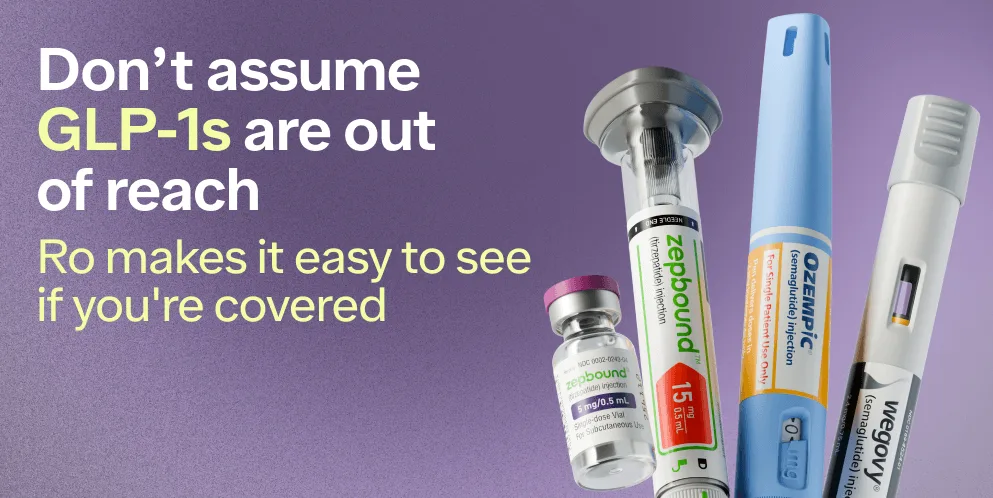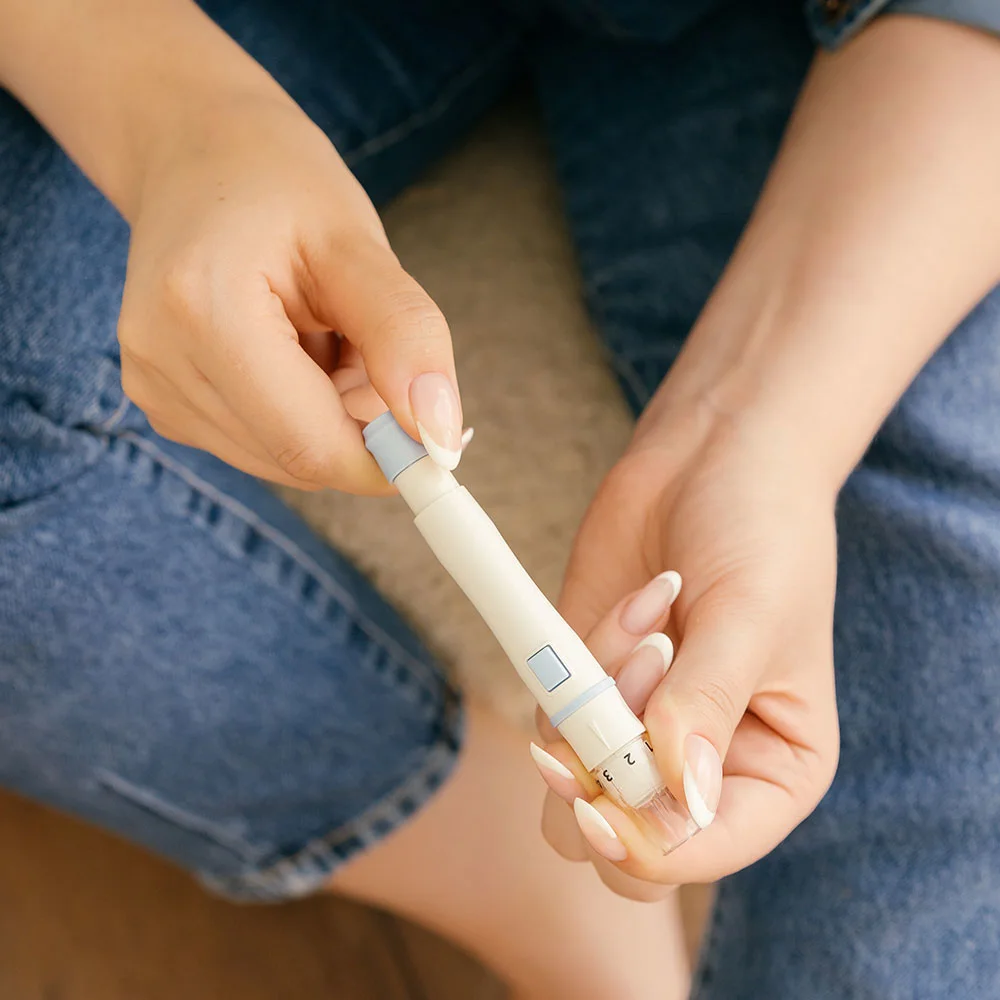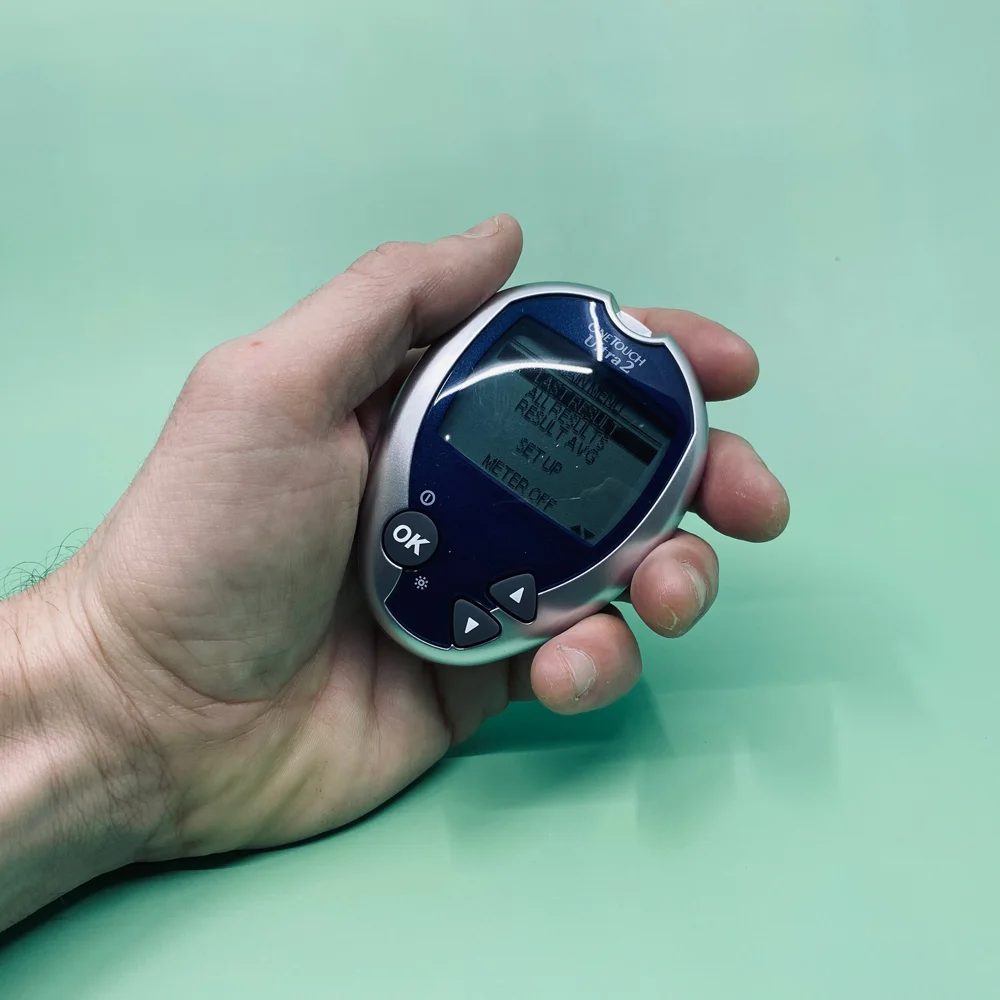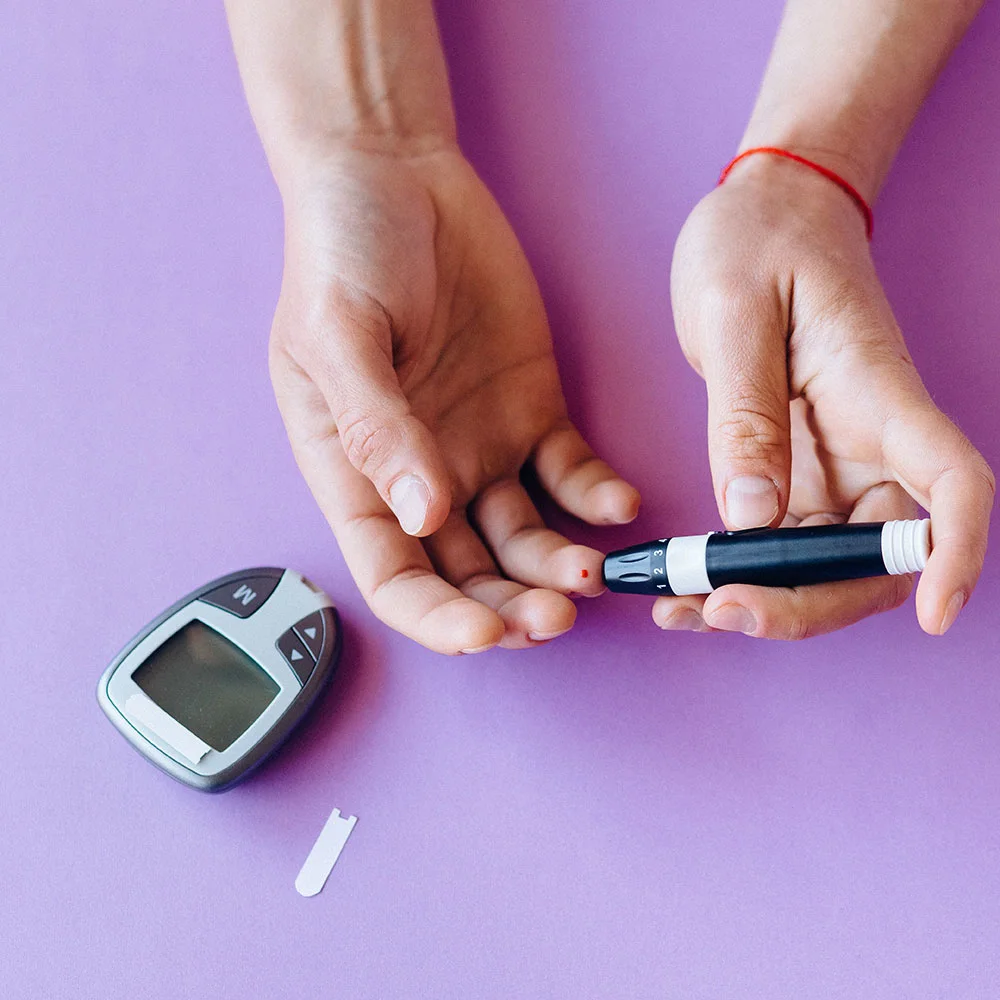Here's what we'll cover
Here's what we'll cover
Here's what we'll cover
Let's start with a myth: All people who are diagnosed with diabetes need insulin for treatment.
Although widely believed, this could not be further from the truth. While it is true that some people with diabetes require insulin (including all people with type 1 diabetes), the treatment of diabetes is actually much more multifaceted and includes many medications and lifestyle changes. To give you the real numbers about insulin, according to the Centers for Disease Control and Prevent (CDC), in 2011:
17.8% of people with diabetes were treated with insulin alone
50.3% of people with diabetes were treated with pills alone
13.0% of people with diabetes were treated with a combination of insulin and pills
So, how is diabetes treated? Let's break it down by type:
How is type 1 diabetes treated?
Right after we tell you that not all people with diabetes need insulin, we're telling you that all people with type 1 diabetes DO actually need insulin.
The problem in type 1 diabetes mellitus (T1DM) is that the pancreas does not make insulin anymore - and insulin is essential to life. As a result, they must receive insulin as a treatment. In fact, before the discovery of insulin in the 1920s, T1DM was always fatal.
Over the years, multiple different forms of insulin have been developed as well as numerous different ways of receiving insulin. The standard method of insulin delivery is with insulin injections (also called insulin shots). This is when an individual has a vial of insulin, draws up a predetermined dose of insulin into a syringe, and gives themselves an injection.
More user-friendly forms of insulin delivery include the insulin pen and the insulin pump. The insulin pen is a device that already has several doses of insulin in it and uses a smaller needle. The insulin pump is a wearable device that allows for a continuous infusion of low levels of insulin, with larger doses as needed at mealtime. The future of insulin pump therapy may include linking the pump to constant glucose monitoring so that it can give insulin directly in response to blood sugar levels. This would create a closed-loop form of insulin delivery and is sometimes referred to as an "artificial pancreas."
For those who may feel uncomfortable with so many needle sticks in one day, insulin can also be given through a jet injector, which is a device that works by shooting high-pressure liquid medication through the skin. Additionally, there is one FDA-approved form of inhaled insulin available called Afrezza.
The goal of insulin therapy is to mimic what would naturally be happening in the body. This includes maintaining a low level of insulin constantly (the basal level) with spikes around mealtime (boluses). Many different types of insulin (also called insulin analogs) have been developed to this end. They are generally classified by their time of onset (how long the insulin takes to start working), their peak time (how long after injection the insulin is most effective), and their duration (how long the effects of the insulin last for). Insulin types include:
Rapid-acting: Starts working in 15 minutes, peaks in 1 hour, is effective for 2-4 hours (e.g., lispro/Humalog, aspart/Novolog)
Regular or short-acting: Starts working in 30 minutes, peaks in 2-3 hours, is effective for 3-6 hours (e.g., Humulin R, Novolin R)
Intermediate-acting: Starts working in 2-4 hours, peaks in 4-12 hours, is effective for 12-18 hours (e.g., NPH/Humulin N, NPH/Novolin N)
Long-acting: Starts working after several hours, is effective for 24+ hours (e.g., detemir/Levemir, glargine/Basaglar, glargine/Lantus)
Ultralong-acting: Starts working after several hours, is effective for 42+ hours (e.g., degludec/Tresiba)
Depending on an individual's specific needs and lifestyle, these forms of insulin may be used in combination with one another.
More invasive methods of treating T1DM include pancreas transplantation or islet cell transplantation (ADA, 2003; NIH, 2018). However, these are rarely done and do not represent the standard treatment of the disease. Both of these therapies address the underlying issue in T1DM: that the pancreas has stopped producing insulin. Pancreas transplantations have been successfully performed and involve replacing the entire pancreas. This requires a donor and also necessitates that the person with T1DM remains on lifelong medications that suppress the immune system (to prevent the body from rejecting the transplant). Pancreatic islet transplantation involves transplanting just the islets of Langerhans, which are the areas of the pancreas that produce insulin. This is currently only an experimental treatment for T1DM. In either case, there is no guarantee that T1DM does not recur.
People with T1DM also need to engage in lifestyle modifications to manage their condition. The overall goal for people with T1DM is to achieve better glucose control (maintaining normal blood sugar levels). In order to do this, people with T1DM should monitor what they eat and when, including the relative numbers of carbohydrates, fats, and proteins. Additionally, people with T1DM should regularly check their blood glucose levels and adjust their insulin dosage accordingly. Getting exercise every day is one way to keep blood sugar levels down. However, if you change the amount of exercise you are doing each day, talk to your healthcare provider as this needs to be factored in when determining your insulin dosage.
How is type 2 diabetes treated?
Perhaps even more so than in T1DM, lifestyle modifications are important in the management of type 2 diabetes mellitus (T2DM). Being overweight or obese and living a sedentary lifestyle are two of the most significant risk factors for developing insulin resistance, which is the cause of type 2 diabetes. As such, any treatment regimen for T2DM should include a weight loss goal and an exercise plan. According to studies, weight loss of 5-10% of body weight can "improve fitness, reduce HbA1c levels, improve cardiovascular disease (CVD) risk factors, and decrease the use of diabetes, hypertension, and lipid-lowering medications" (Gaal, 2015).
Paying attention to diet is the most effective way to lose weight. Eating a diet that is rich in whole, unprocessed foods and is low in carbohydrates can likely lead to more weight loss than a diet composed of processed foods (e.g., breads and pastas). Cutting out extra sources of sugar, such as sugar-sweetened beverages, is another effective weight loss tool. Some people with diabetes may find it effective to pay attention to the glycemic index or the glycemic load of foods, which are values assigned to carbohydrate-containing foods that give an idea of how much each food might spike blood sugar levels.
Concerning physical activity, it is recommended that everybody gets at least thirty minutes of moderate exercise at least five days a week.
Quitting smoking can also improve risk factors and improve overall health.
While some people with T2DM require insulin for blood sugar control, the majority do not need it. Instead, there are a variety of other oral medications and injectable medications that work to help control blood sugar levels. One of the most popular and typically the first medication prescribed for those with T2DM is metformin (brand name Glucophage). Metformin works by making the body more sensitive to insulin and decreasing the amount of glucose the liver releases into the bloodstream. Other classes of medications that can be used to treat T2DM include:
Alpha-glucosidase inhibitors (e.g., acarbose/Precose)
Bile acid sequestrants (e.g., colesevelam/Welchol)
Dopamine-2 agonists (e.g., bromocriptine/Parlodel)
DPP-4 inhibitors (e.g., sitagliptin/Januvia)
GLP-1 receptor agonists (e.g., dulaglutide/Trulicity, exenatide/Byetta, liraglutide/Victoza)
Meglitinides (e.g., repaglinide/Prandin)
Sulfonylureas (e.g., glimepiride/Amaryl, glipizide/Glucotrol, glyburide/DiaBeta)
SGLT2 inhibitors (e.g., canagliflozin/Invokana, empagliflozin/Jardiance)
Thiazolidinediones (e.g., pioglitazone/Actos, rosiglitazone/Avandia)
How is gestational diabetes treated?
The approach to gestational diabetes treatment starts with lifestyle modifications. These include diet, exercise, and frequent blood sugar checks. Certain women may require insulin injections to manage their blood sugar if diet and exercise alone are not effective. Some studies have shown that oral diabetes medications, like metformin, can be safely used in pregnancy (Feig, 2011). However, metformin is known to cross the placenta (which means it reaches the baby). As a result, some healthcare professionals believe more research needs to be done regarding the use of oral medications to treat gestational diabetes. Treatment is vital because gestational diabetes can lead to complications in both the mother and the newborn. Women who have gestational diabetes have an increased risk of needing a C-section and also an increased risk of developing T2DM after being pregnant. And newborns are at risk of high birth weight, low blood sugar, and developing T2DM later in life.
What does the lifelong management of type 1 diabetes and type 2 diabetes entail?
T1DM and T2DM are lifelong diseases. Beyond the lifestyle changes and medications used every day, a significant part of diabetes management has to do with staying regularly connected to the healthcare system and screening for other conditions that tend to occur with diabetes or are complications of diabetes. The mainstays of lifelong management include:
Blood sugar control: Having a blood sugar level that is too high (called hyperglycemia) or a blood sugar level that is too low (called hypoglycemia) can be dangerous. Controlling blood sugar is, therefore, a delicate balance to stay within the normal range. Your healthcare provider can perform a hemoglobin A1c (HbA1c) blood test to monitor how well blood sugars have been controlled over the prior 2-3 months. It is often stated that the target HbA1c for people with diabetes is <7.0. However, to minimize the risk of hypoglycemia, a target of <8.0 may be more appropriate for specific individuals.
Management of high blood pressure (hypertension) and high cholesterol (hyperlipidemia): Diabetes is a risk factor for many other diseases, including cardiovascular disease (heart disease and blood vessel disease). As such, it is crucial to identify and treat additional risk factors for cardiovascular disease. Recommendations change every few years, but people with diabetes should typically aim for a target blood pressure of <140/90 or <130/80 and most people with diabetes aged 40-75 should be on a statin, which is a cholesterol-lowering medication (Bangalore, 2011).
Annual screening exams: Long term, diabetes can lead to eye problems (diabetic retinopathy), kidney problems (diabetic nephropathy), and nerve problems (diabetic neuropathy). If unchecked, these can progress to blindness, the need for dialysis or kidney transplant, and amputations. To keep an eye out for these complications, people with T1DM and T2DM should undergo an annual eye exam (known as a fundoscopic exam), an annual foot exam, and a yearly urine test that looks for small amounts of protein (microalbuminuria).
DISCLAIMER
If you have any medical questions or concerns, please talk to your healthcare provider. The articles on Health Guide are underpinned by peer-reviewed research and information drawn from medical societies and governmental agencies. However, they are not a substitute for professional medical advice, diagnosis, or treatment.
References
American Diabetes Association. (2003). Pancreas Transplantation for Patients With Type 1 Diabetes. Diabetes Care , 26 (Supplement 1). doi: 10.2337/diacare.26.2007.s120. Retrieved from https://care.diabetesjournals.org/content/26/suppl_1/s120
Bangalore, S., Kumar, S., Lobach, I., & Messerli, F. H. (2011). Blood Pressure Targets in Subjects With Type 2 Diabetes Mellitus/Impaired Fasting Glucose. Circulation , 123 (24), 2799–2810. doi: 10.1161/circulationaha.110.016337. Retrieved from https://www.ncbi.nlm.nih.gov/pubmed/21632497
Feig, D. S., & Moses, R. G. (2011). Metformin Therapy During Pregnancy: Good for the goose and good for the gosling too? Diabetes Care , 34 (10), 2329–2330. doi: 10.2337/dc11-1153. Retrieved from https://www.ncbi.nlm.nih.gov/pubmed/21949224
Gaal, L. V., & Scheen, A. (2015). Weight Management in Type 2 Diabetes: Current and Emerging Approaches to Treatment. Diabetes Care , 38 (6), 1161–1172. doi: 10.2337/dc14-1630. Retrieved from https://www.ncbi.nlm.nih.gov/pubmed/25998297
National Institutes of Health. (October 1, 2018). Pancreatic Islet Transplantation. Retrieved from https://www.niddk.nih.gov/health-information/diabetes/overview/insulin-medicines-treatments/pancreatic-islet-transplantation












